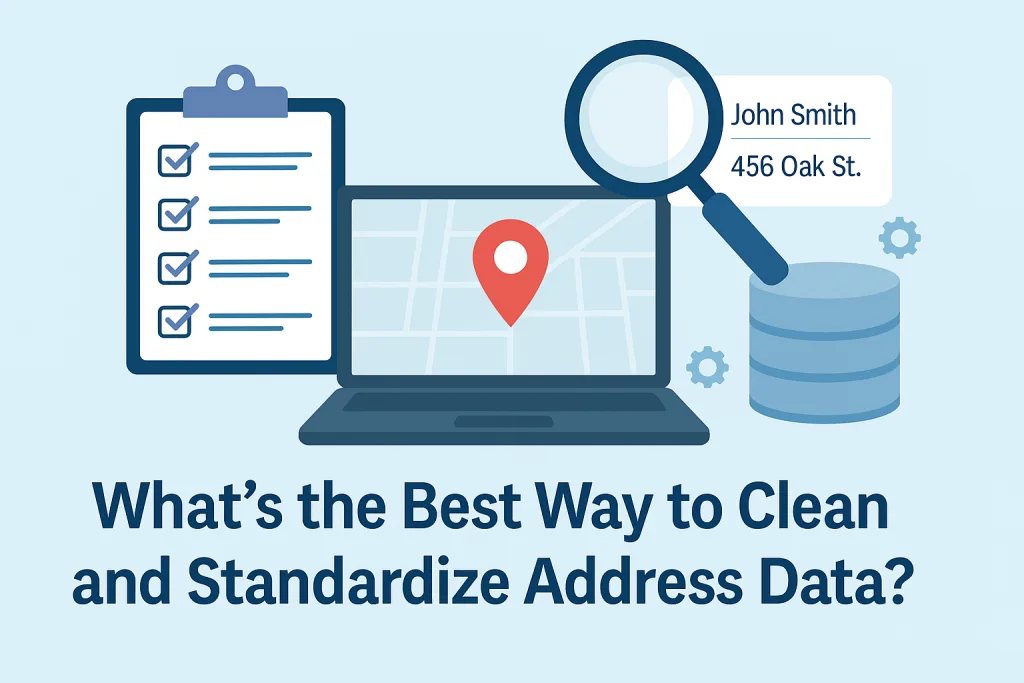What’s the Best Way to Cleanse and Standardize Address Data

We’ve worked with address data for years—some of it clean, most of it not. If you’ve ever dealt with a messy spreadsheet full of inconsistent addresses, you know how painful it can be. You’re not alone. Address data is notoriously difficult to get right, especially when it’s collected from different sources, users, or systems.
We want to walk you through how we tackled this problem head-on, using data profiling, cleansing, and fuzzy matching with Match Data Pro. Whether you’ve got 5,000 addresses or 5 million, this guide will help you understand how to clean, normalize, and deduplicate your address data like a pro—without being one.
Why Address Data Is So Hard to Work With
It’s easy to underestimate just how messy address data can get. Here are a few problems we see almost every time:
Missing zip codes
Abbreviations like “St.” and “Ave” used inconsistently
Apartment or suite numbers showing up in the wrong place
Typos like “Nw York” instead of “New York”
Duplicates—same address, slightly different formatting
Now multiply that by tens of thousands of records from CRMs, customer databases, or online forms. You end up with data that’s unreliable, expensive to mail to, and hard to analyze.
Step 1: Profile Your Data First
Before you even think about cleaning, you need to understand the structure and quality of your data. We always start with data profiling.
Using Match Data Pro, we were able to get immediate insights into:
Column completeness
Value patterns (like common abbreviations or punctuation)
Outliers in city names or zip codes
The percentage of unique records
It was eye-opening. Turns out, nearly 18% of our addresses were either incomplete or contained unrecognized values. Without profiling, we would’ve been guessing where the problems were.
Step 2: Normalize and Cleanse
Once we knew what we were working with, it was time to standardize the addresses. This is the most important (and most tedious) part of the process—but it doesn’t have to be.
Match Data Pro makes address cleansing flexible and rule-based. Here’s how we approached it:
a) Standardize Abbreviations
We set up rules to convert:
“St.” → “Street”
“Ave” → “Avenue”
“Rd” → “Road”
These simple changes made a big impact, especially when it came time to deduplicate later.
b) Fix Common Typos
We used dictionaries and cleansing patterns to correct common city and state misspellings. This worked wonders for international addresses too.
c) Split and Recombine Fields
Many addresses had apartment numbers mixed in with the street line. We used parsing rules to split these into consistent fields, like Street_Line_1, Street_Line_2, and Unit_Number.
All of this was done in just a few clicks. No code. No manual edits.
Step 3: Match and Deduplicate
Once your data is standardized, you can finally start fuzzy matching to detect duplicates.
What Is Fuzzy Address Matching?
It’s the process of finding records that are similar, but not identical. Like:
“123 Main Street Apt 5B”
“123 Main St #5B”
Those are the same place, but they won’t match exactly. This is where fuzzy logic shines.
Real Results
In our dataset of 42,000 records, fuzzy address matching with Match Data Pro found over 3,000 potential duplicates. That’s nearly 8% redundancy—wasted effort, postage, and time.
The best part? We didn’t have to tune any algorithms. We simply chose our match definitions, set a threshold, and the system did the rest—at scale.
How It All Comes Together
Here’s what we learned (and how Match Data Pro helped):
| Task | Traditional Method | MDP Solution |
|---|---|---|
| Understand data quality | Manual review | One-click profiling |
| Normalize addresses | Scripts or manual fixes | Dictionary & rule-based cleansing |
| Find duplicates | Exact match or complex code | Built-in fuzzy matching |
| Handle millions of records | Often fails or slows down | Optimized engine handles big data easily |
What Makes Match Data Pro Different?
We’ve tried other tools. Many are too technical, too slow, or too expensive. Match Data Pro stands out because it’s:
Fast – Can process millions of records quickly
Visual – Clear profiling charts and cleansing rules
Flexible – Handles any kind of address format
Customizable – Save your own definitions and reuse them
Collaborative – Share projects across your team with user roles
Connectable – Works with your databases and file systems
Secure – Credentials are saved and editable
You can even create and save custom SQL queries if you want more control.
The Payoff: Clean Data That Works
Clean and deduplicated address data helps you:
Save money on direct mail campaigns
Improve customer experience and CRM accuracy
Simplify shipping and logistics
Make reporting and analytics more reliable
It’s one of those things that pays for itself fast—especially at scale.
Final Thoughts
We used to spend weeks cleaning address data. Now we do it in hours.
If you’re serious about data cleansing, normalization, and fuzzy address matching, you don’t need to code or hire a data scientist. You just need the right tool.
Match Data Pro helped us go from chaotic spreadsheets to clean, trusted data—and it can do the same for you.
Ready to Try It?
See for yourself how easy address cleansing can be.
Schedule a demo today.
